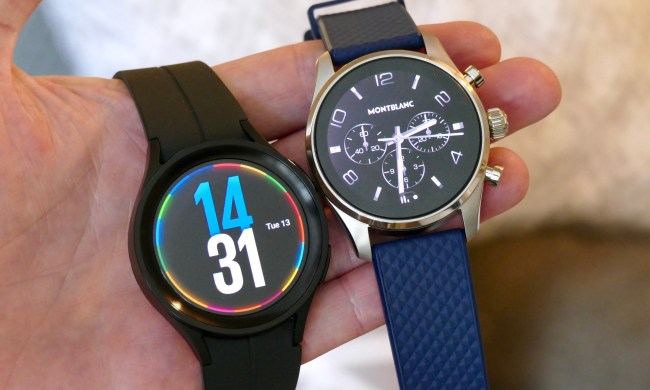Garmin added three new smartwatches to its Vivo lineup of wearable devices at IFA 2017 — taking on both Fitbit’s Ionic smartwatch and the upcoming Apple Watch Series 3. Most noteworthy among the new additions is the Vivoactive 3 equipped with an updated look, NFC payment system, and more.
As a successor to the Vivoactive HR, the Vivoactive 3 has a round-faced Chroma display with a single side-facing button. Built into the device is GPS, along with heart sensors for constant monitoring during workouts. In terms of battery life, the device should be able to last a full week or 13 hours if you have the GPS on.
A new mechanism on the Vivoactive 3 is “Side Swipe,” which comes in handy when your hands are too sweaty to touch the display. You can instead scroll through menus by swiping the side of the watch case.
Similar to Fitbit’s new smartwatch, Garmin introduced contactless payment for the device as well. But rather than building a payment system from the ground up, Garmin Pay is powered by a third-party developer known as FitPay. It works with MasterCard, Visa, and other credit cards with select banks, so you can load your cards onto it and make purchases even if you leave your wallet at home.
There are also 15 different indoor and outdoor sports apps to choose from, as well as support for third-party apps like Uber. Since the Vivoactive 3 is a fitness watch, it also includes VO2 max — to track your body’s ability to import and transport oxygen which produces energy aerobically.
The Vivosport, on the other hand, is a stripped-down version of the Vivoactive 3. It’s aimed toward those who don’t prefer wearing a smartwatch while working out. It still includes fitness monitoring tools like VO2 max and built-in sports apps but is limited when it comes to other high-end features like Garmin Pay.
As far as customization, you cannot change the bands and will also be stuck with a smaller display. Based on available features, it looks like you won’t be able to download additional apps or watch faces from the Garmin Connect IQ app store either. But one feature that sets it apart from wristbands is the LiveTrack tool which lets you share your location with family and friends while working out.
Last in the lineup is the Vivomove HR — a fashion-forward option among the new devices. It still keeps the same sophisticated design and traditional watch face as the Vivomove before it, but now includes a touchscreen. Regardless of the fancier look, the device can still be used as both a smartwatch and an activity tracker.
The “hybrid” device allows you to scroll through information such as steps taken, weather updates, heart rate, and texts or email alerts, among others. With Garmin’s heart-rate monitor built in, you can track anything related to your pulse whether it’s all-day heart rate or VO2 max. Even though there is no GPS, it is also water-resistant and will last you for up to five days when it comes to battery life.
All three of Garmin’s new devices will be available for purchase later this year. The Vivoactive 3 will run you anywhere from $300 to $330 based on the build. The Vivosport comes in at $200, while the Vivomove HR starts at $200 for the Sport version and $300 for the leather-strapped Premium version.



